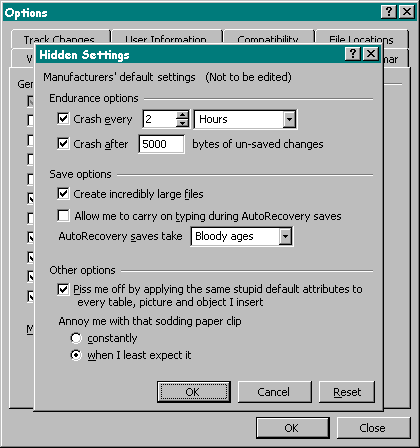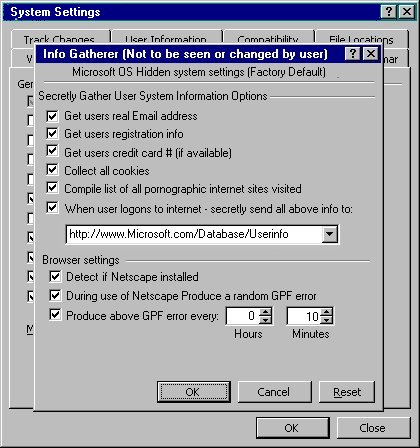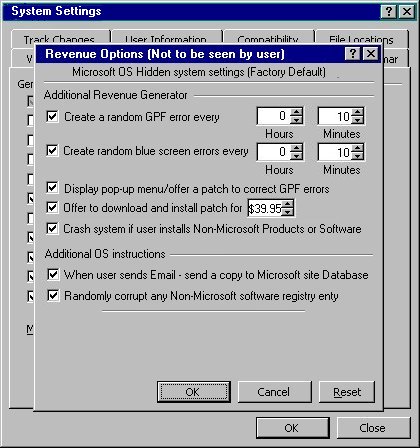



Lest our members think we deal only in the exalted world
of Macintosh computers and Mac OS software, we present some
new developments from outside our normal range of
activities. But first, a disclaimer:
The first item of interest is a satellite keyboard for
use on Wintel computers. This clever item, attractively
priced just in time for the holidays (Valentine's Day?),
allows a Windows user to easily press the three most
commonly used keys on a Wintel computer: Control-Atl-Delete.
A careful examination of the photo, using high-powered,
exotic software (the magnifying glass in Adobe Photoshop
5.5), reveals that, alas, this can't be used on a Macintosh,
even with Virtual PC: the connector looks something like an
ADB plug, but is actually a PS/2 connector. One rumor (which
we just started) suggests that Microsoft might create a
cross-platform USB version, for use on Wintel machines and
USB-equipped Macs running Virtual PC.
The next item really isn't a product so much as a
discovery: secret settings that control fundamental actions
in Word 97 and Word 2000 on Wintel machines. Since Word 97
under Windows and Word 98 on Mac OS share many common
characteristics, we can only assume similar settings are
available on the Mac version. So far, we've failed to find
such settings, but we have discovered several really funny
suggestions to certain names using the Word thesaurus.
The next item is another discovery: where Spam comes
from. This secret dialogue box, allegedly common to Windows
98, Windows NT 4.0 and Windows 2000, clearly reveals why
your E-mail address is in the hands of every Spammer on the
planet. For those unfamiliar with Windows terminology, GPF
stands for "General Protection Fault," otherwise known as
the "Blue Screen of Death." Note that the Blue Screen of
Death has been eliminated in Windows 2000: it is now a red
screen.
Another hidden settings box, allegedly common to both
Windows 98, Windows NT 4.0 and Windows 2000, explains why
Microsoft is the most highly valued company in history.
Note, for example, the easy-to-use setting for increasing
the cost of patches. No wonder Microsoft is an industry
leader!
We hope you found these tidbits as interesting as the
several dozen people who sent them to us. No need to thank
us; keep those cards and letters.
Washington Apple Pi Labs did not generate any
of the illustrations for this article. In a break from
past practice, we didn't test any of this, either. All of
the illustrations were sent to us via electronic mail,
usually without attribution or, in some cases, even
without an accompanying message. We did, however, receive
multiple copies of all illustrations. In one case, 27
copies of the same illustration. We thank our loyal
readers, and sincerely hope they remove us from their
address books.



![]()
Revised March 17, 2000 Lawrence I. Charters
Washington Apple Pi
URL: http://www.wap.org/journal/